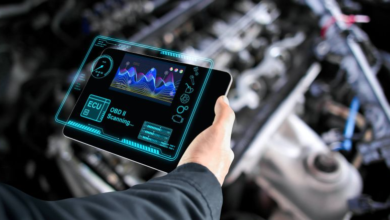Heat Pipes Ultimate Guide: What are Heat Pipes

If you’ve ever wondered what are heat pipes are and why they’re so important for cooling electronic devices. Heat pipes help laptops and gaming PCs stay cool by quickly carrying heat away from important parts. In this guide, we’ll explain how heat pipes work, their benefits, and why they’re essential for keeping modern electronics cool and running well.
What are Heat Pipes?
A heat pipe is a device that quickly and quietly transfers heat from one place to another using a liquid-vapor cycle inside, without any moving parts or extra power. It helps cool electronics and other equipment efficiently.
Parts of a Heat Pipe
- Outer Shell (Envelope): A sealed tube made from materials like copper or aluminum that holds everything inside.
- Wick Structure: A sponge-like lining inside the pipe that pulls the liquid back to the hot end using capillary action, similar to how a paper towel soaks up water.
- Working Fluid: A small amount of liquid (such as water or ammonia) that evaporates at the hot end and condenses at the cold end, carrying heat along the way.
How It Works (Step-by-Step)
- Evaporation (Hot Side): Heat makes the liquid boil and turn into vapor.
- Condensation (Cold Side): Condensation happens when the vapor cools down, turns back into liquid, and releases heat.
- Return: The wick pulls the liquid back to the hot side to start the cycle again.
Heat pipes transfer heat quickly and quietly using a simple process that requires no moving parts or additional energy.
Types of Heat Pipes
1. Standard Heat Pipes (Constant Conductance)
A sealed tube with a wick lining inside and filled with a working liquid. Used for: Heat pipes help laptops, desktops, and LED lights stay cool and work better.
2. Vapor Chambers (Flat Heat Pipes)
A flat version of a heat pipe that spreads heat out in two directions (across a surface), not just along a line.
- Used for: Cooling CPUs, GPUs, and LEDs in tight spaces by spreading heat evenly.
3. Loop Heat Pipes (LHP) & Capillary Pumped Loops (CPL)
They can move heat over long distances and uphill because the fluid movement doesn’t rely on gravity.
- Used for: Space uses like satellites and airplanes, where gravity can’t help the fluid move inside the system.
Advantages of Heat Pipes
- Super Efficient at Moving Heat
Heat pipes transfer heat over 1,000 times faster than metal, cooling quickly even with small temperature differences.
- No Power or Moving Parts Needed
They work naturally without fans or pumps, which saves energy and means fewer parts can break.
- Evenly Spreads Heat
Heat pipes distribute heat evenly, preventing hot spots and ensuring smooth electronics operation.
- Works in Any Position
Heat pipes work effectively in any position, making them highly versatile.
- Small and Lightweight
Heat pipes are thin and light, making them perfect for laptops, phones, and spacecraft.
- Completely Silent
Heat pipes operate silently, making them ideal for quiet environments like hospitals and homes.
- Low Maintenance and Durable
Heat pipes are durable and low-maintenance, lasting many years without repairs, even in hard-to-reach areas.
- Saves Energy and Costs
They reduce the need for other cooling systems, helping save electricity and lower costs, which is also better for the environment.
- Flexible and Customizable
Heat pipes can be designed in many shapes and sizes to fit small gadgets or large industrial machines.
Heat pipes cool things quickly and quietly. They’re dependable and can easily fit into many devices, making them perfect for cooling everything from phones to spacecraft.
Limitations and Considerations of Heat Pipes
- Heat Transfer Limits: Heat pipes have physical limits, including the wick’s liquid movement, overheating vapor blockages, and vapor-liquid flow issues.
- Orientation Sensitivity: Their performance depends on position—tilting or flipping can reduce efficiency unless special designs (like vapor chambers) are used.
- Temperature Range: Heat pipes work best when the temperature is just right for the liquid inside to evaporate and condense. If it gets too hot or too cold, they won’t cool as well.
- Complex Design and Manufacturing: Making heat pipes requires careful control of the wick, liquid, and sealing. If something goes wrong, the heat pipe can fail. Custom designs also cost more and take more time to make.
- Material Compatibility: The pipe materials, wick, and fluid must not react chemically; incompatibility leads to corrosion or gas buildup, hurting performance.
- Cost: High-performance or custom heat pipes can be expensive, making them ideal for demanding or space-tight uses.
- Size and Integration: Heat pipes are small and fragile, requiring careful handling to maintain performance.
Heat pipes cool effectively but require proper design and setup for reliable performance.
How to Maintain Heat Pipes
Heat pipes usually don’t need much maintenance, but a few simple steps can help keep them working well for a long time:
- Check Them Regularly: Look for any dents, cracks, rust, or signs that they’re not cooling properly.
- Handle with Care: Avoid bending, crushing, or dropping heat pipes to keep them working well.
- Watch for Cooling Problems: If a heat pipe isn’t cooling as it should, gases might have built up inside. It may need to be cleaned out and refilled.
- Keep Away from Harsh Chemicals: Avoid exposing heat pipes to corrosive substances or extreme conditions that could harm their parts.
- Use Sensors if Possible: Temperature or pressure sensors can help spot problems early before they become serious.
Following these simple tips will help heat pipes stay efficient and reliable for many years.
Conclusion: What Are Heat Pipes?
Heat pipes quickly and quietly simply move heat. They are sealed tubes filled with a special liquid and a sponge-like material called a wick. When one end gets hot, the liquid turns into vapor and travels to the cooler end, where it releases heat.
Then, the wick pulls the liquid back to the hot end to start the process again. Because heat pipes have no moving parts and don’t need electricity, they cool things silently and reliably. They’re small, strong, and spread heat evenly, making them great for cooling laptops, gaming PCs, and even spacecraft.
Heat pipes are an efficient and dependable solution for preventing electronics from overheating. They don’t need much maintenance and work well if they’re built and used correctly.




